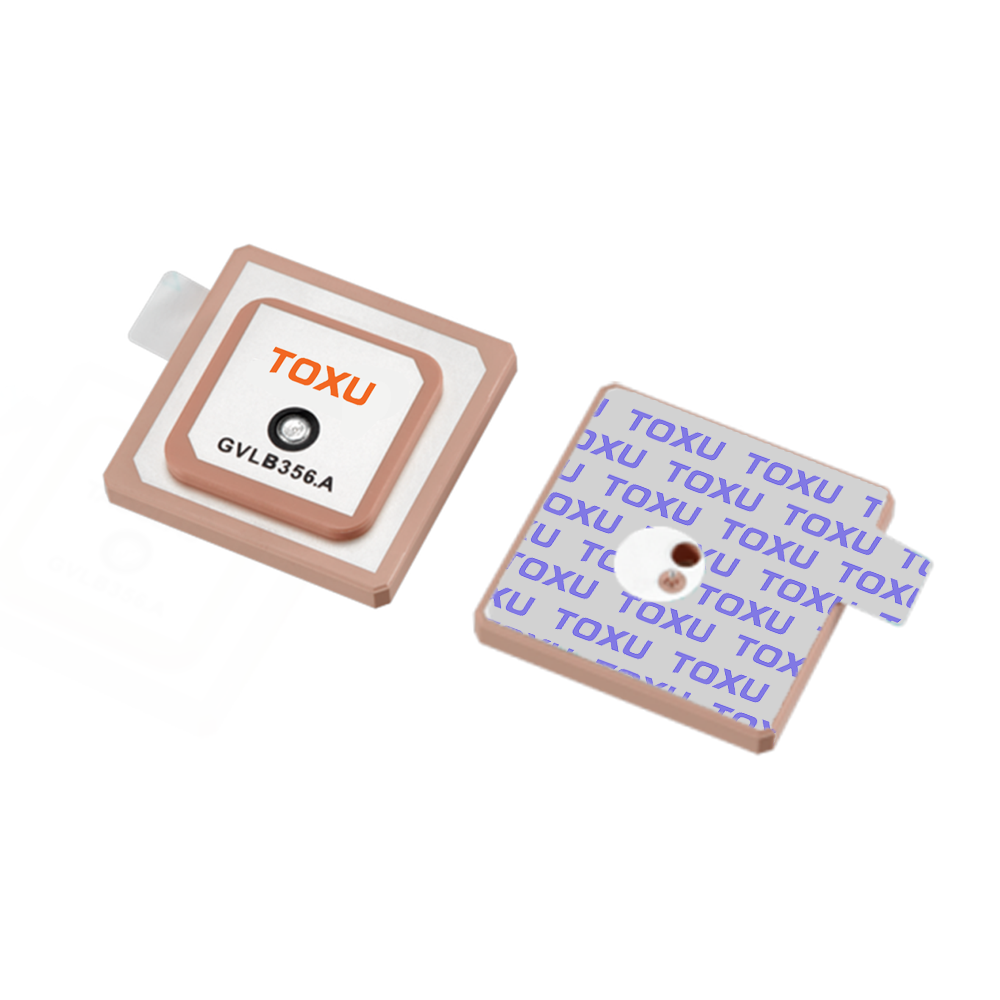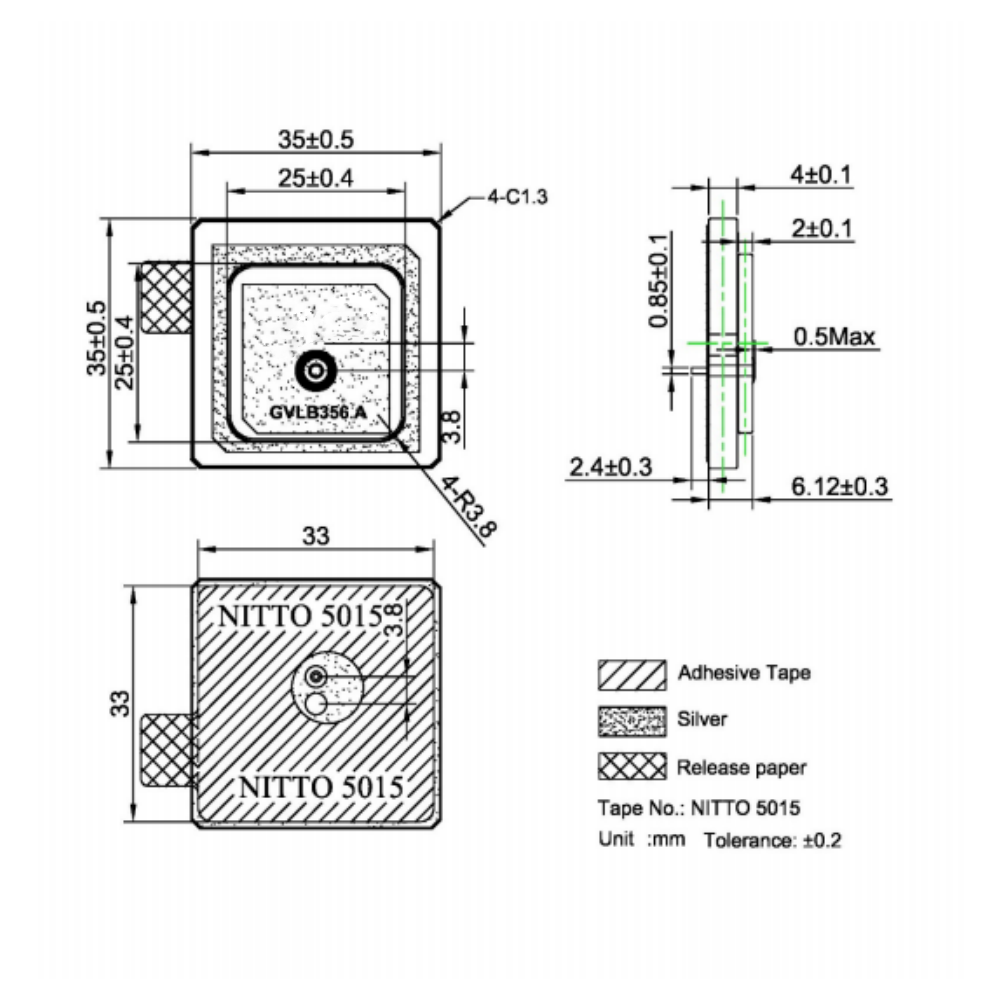5.1 Applications
5.1.1 Navigation in Consumer Electronics
High - sensitivity GNSS ceramic antennas are widely used in consumer electronics for navigation purposes. In smartphones, they enable accurate location - based services, such as turn - by - turn navigation, ride - sharing applications, and location - based advertising. The compact size of the ceramic antenna allows it to be easily integrated into the smartphone's motherboard, while its high sensitivity ensures reliable positioning even in urban areas with tall buildings. Tablets and portable navigation devices also rely on these antennas to provide users with accurate navigation information. In addition, wearables such as smartwatches with built - in GPS functionality use high - sensitivity GNSS ceramic antennas to track the wearer's location, which is useful for fitness tracking, outdoor activities, and navigation.
5.1.2 Precision Agriculture
In precision agriculture, high - sensitivity GNSS ceramic antennas play a crucial role in enabling accurate positioning of agricultural machinery. Tractors, combines, and sprayers equipped with these antennas can be guided with high precision, allowing for more efficient use of fertilizers, pesticides, and water. The accurate positioning helps in minimizing overlap and ensuring uniform coverage during field operations. For example, in variable - rate fertilization systems, the GNSS - enabled equipment can adjust the amount of fertilizer applied based on the precise location within the field, taking into account soil fertility variations. This not only reduces input costs but also helps in protecting the environment by minimizing the overuse of agricultural chemicals.
5.1.3 Surveying and Mapping
Surveyors and mapping professionals rely on high - sensitivity GNSS ceramic antennas to obtain accurate location data for land surveys, topographic mapping, and infrastructure projects. These antennas can provide centimeter - level accuracy, which is essential for creating detailed and precise maps. In large - scale construction projects, the use of GNSS - equipped surveying equipment with high - sensitivity antennas can help in ensuring that the building foundations, roads, and other structures are laid out correctly. The stability and high sensitivity of the ceramic antennas in different environmental conditions make them suitable for use in both urban and remote areas, where traditional surveying methods may be more challenging to implement.
5.1.4 Autonomous Vehicles
Autonomous vehicles require highly accurate positioning information to operate safely and effectively. High - sensitivity GNSS ceramic antennas are an important component of the positioning system in autonomous cars, trucks, and drones. The antennas provide real - time location data, which is used in combination with other sensors such as lidar, radar, and cameras to navigate the vehicle. In urban environments, where the GNSS signals can be affected by multipath interference and signal blockage, the high - sensitivity of the ceramic antennas helps in maintaining reliable positioning. The use of multiple GNSS constellations and the ability of these antennas to receive signals from different frequencies also contribute to improving the accuracy and redundancy of the positioning system in autonomous vehicles.
5.2 Future Trends
5.2.1 Integration with Other Technologies
In the future, high - sensitivity GNSS ceramic antennas are likely to be more closely integrated with other emerging technologies. For example, there will be increased integration with 5G and future wireless communication technologies. As 5G networks roll out globally, the combination of GNSS and 5G can enable new applications such as ultra - precise indoor and outdoor positioning. In indoor environments, where GNSS signals are often weak or unavailable, 5G networks can be used to provide supplementary positioning information, and the GNSS ceramic antenna can help in calibrating and enhancing the accuracy of the overall positioning system. Additionally, integration with artificial intelligence (AI) and machine learning (ML) algorithms is expected. AI and ML can be used to analyze the GNSS data in real - time, improve signal processing, and better mitigate issues such as multipath interference and signal blockage.
5.2.2 Miniaturization and Performance Improvement
The trend towards miniaturization of electronic devices will continue to drive the development of even smaller and more efficient high - sensitivity GNSS ceramic antennas. Researchers are working on developing new ceramic materials and manufacturing techniques to further reduce the size of the antennas while maintaining or improving their performance. This may involve the use of nanomaterials or advanced printing technologies to create more complex antenna structures. At the same time, efforts will be made to improve the sensitivity, gain, and bandwidth of the antennas. For example, new antenna designs may be developed to better handle the increasing number of GNSS constellations and the wider range of frequencies they operate on, providing more accurate and reliable positioning in diverse environments.
5.2.3 Expansion into New Application Areas
As the performance of high - sensitivity GNSS ceramic antennas continues to improve, they are likely to be adopted in new application areas. In the healthcare industry, for example, these antennas could be used in wearable devices for tracking the location of patients, especially those with cognitive impairments or in remote healthcare monitoring applications. In the logistics and supply chain management, GNSS - enabled tags with high - sensitivity ceramic antennas could be used to track the movement of goods more accurately, reducing losses and improving efficiency. The growth of the Internet of Things (IoT) will also create new opportunities for these antennas, as more and more devices will require accurate positioning capabilities for applications such as asset tracking, environmental monitoring, and smart city infrastructure management.
Conclusion
High - sensitivity GNSS ceramic antennas have emerged as a crucial component in modern positioning technology. Their unique combination of compact size, high sensitivity, stability in various environments, and cost - effectiveness has made them suitable for a wide range of applications, from consumer electronics to precision agriculture, surveying, and autonomous vehicles.
The design and construction of these antennas, with their carefully selected dielectric substrates, radiating elements, and feed networks, are optimized to interact effectively with the weak satellite signals and convert them into usable electrical signals. The dielectric substrate, with its high dielectric constant and low loss tangent, forms the foundation for miniaturization and efficiency; the radiating elements, often in patch or array configurations, enable precise signal capture and directional control; and the feed network ensures seamless impedance matching and minimal signal loss—all working in tandem to deliver the high - sensitivity performance that defines these antennas.
The working principles, rooted in electromagnetic wave interaction, resonance tuning, and polarization compatibility, further explain why these antennas excel in GNSS applications. By optimizing for the L - band frequencies and circular polarization of GNSS signals, they maximize signal reception efficiency while filtering out unwanted interference. This technical foundation not only addresses the inherent challenges of weak satellite signals but also lays the groundwork for adapting to evolving GNSS constellations and frequency bands.
While the advantages of high - sensitivity GNSS ceramic antennas—compact size, high sensitivity, environmental stability, and cost - effectiveness—have driven their widespread adoption, it is important to acknowledge the ongoing challenges. Multipath interference, limited bandwidth, and signal blockage remain hurdles that require collaborative efforts between antenna designers, signal processing engineers, and device manufacturers to overcome. Innovations such as advanced signal filtering algorithms, multi - constellation compatibility, and integration with complementary sensors (like IMUs) are already making strides in mitigating these issues, and future research will likely yield even more effective solutions.
Looking ahead, the applications of high - sensitivity GNSS ceramic antennas are poised to expand beyond their current domains. As technology advances, their integration with 5G, AI, and IoT will unlock new possibilities: from ultra - precise indoor positioning in smart buildings to real - time asset tracking in global supply chains, and from enhanced patient monitoring in healthcare to autonomous navigation in smart cities. The continued miniaturization of these antennas will also enable their integration into increasingly small and diverse devices, from tiny IoT sensors deployed in remote environmental monitoring stations to compact wearable devices for outdoor adventurers.
In conclusion, high - sensitivity GNSS ceramic antennas are not just components of GNSS receivers—they are enablers of a more connected, precise, and efficient world. Their ability to balance performance, size, and cost has made them indispensable in modern positioning systems, and their ongoing evolution will continue to shape the future of location - based technologies. As the demand for accurate positioning grows across industries, these antennas will remain at the forefront of innovation, driving progress in both established applications and emerging fields. The journey of high - sensitivity GNSS ceramic antennas is far from over; it is a story of continuous improvement, adaptation, and impact—one that will continue to unfold as technology advances and new challenges and opportunities arise.




































































 Language
Language
 En
En Cn
Cn Korean
Korean

 Home >
Home > 







 18665803017 (Macro)
18665803017 (Macro)













